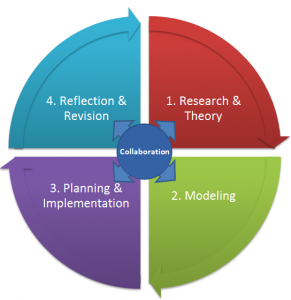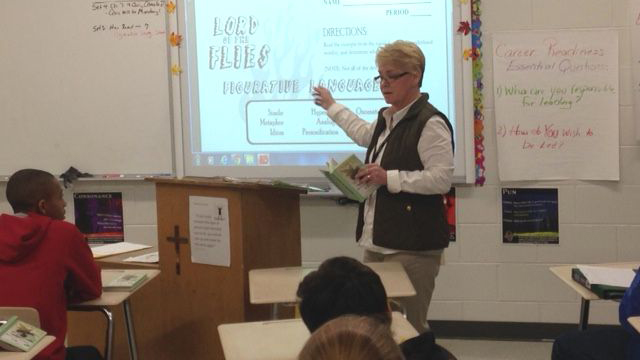You’d like to improve your teaching practices, but do those new methods even work? Sign up for our short, 1-credit courses.
You will
- Learn the theory,
- Watch it modeled,
- Implement it in your own classroom, and
- Reflect on its results.
The Teaching That Works Instructional Theory
Applying Research on Teacher and Student Learning
What does effective professional development for teachers look like? Recent research on this question reveals a number of important conditions that result in the kind of teacher growth that leads to increased student achievement. A report by the National Staff Development Council (now Learning Forward) includes the following principles regarding effective professional development (Wei, Darling-Hammond, Andree, Richardson, & Orphanos, 2009).
- It is connected to the tasks of teaching.
- It focuses on student learning.
- It is sustained and intense.
- It is job-embedded and hands-on.
- It is collaborative with peer feedback and assistance.
On average, when such professional development is sustained for at least 49 hours and is spread over a period of time, it produces student achievement gains of 21 percentile points (Yoon, Duncan, Lee, Scarloss, & Shapley, 2007).
The Teaching That Works series carries out these principles of effective professional development through the following means:
- Focusing on a specific teaching task or instructional practice
- Discussion of the research and theory that supports the given instructional practice
- Observing models of the instructional practice
- Planning for and implementing the instructional practice
- Support through peer and instructor collaboration
- Assessment of results and reflection
The Teaching That Works Instructional Design
Each instructional practice highlighted in the Teaching That Works series is commonly accepted as best practice. Teaching That Works follows an instructional model that supports teacher understanding and implementation of those best instructional practices. There are four major components in the Teaching That Works instructional model. Collaboration with peers and the instructor permeates each of the components. These four components are spread over five weeks of online instruction.
practice highlighted in the Teaching That Works series is commonly accepted as best practice. Teaching That Works follows an instructional model that supports teacher understanding and implementation of those best instructional practices. There are four major components in the Teaching That Works instructional model. Collaboration with peers and the instructor permeates each of the components. These four components are spread over five weeks of online instruction.
- Component 1: Research & Theory (week 1)
- Component 2: Modeling (week 2)
- Component 3: Planning and Implementation (week 3)
- Component 4: Reflection and Revision (weeks 4 & 5)





